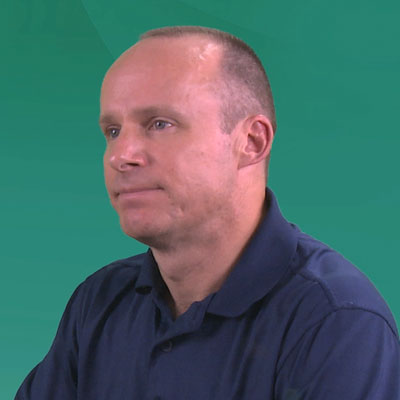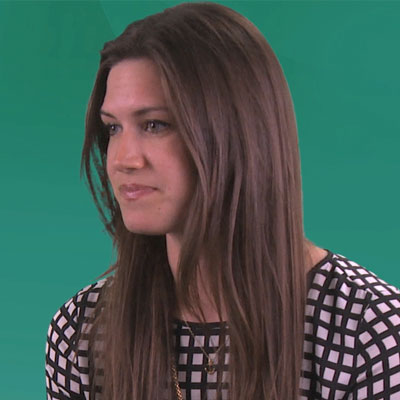Conditions Treated
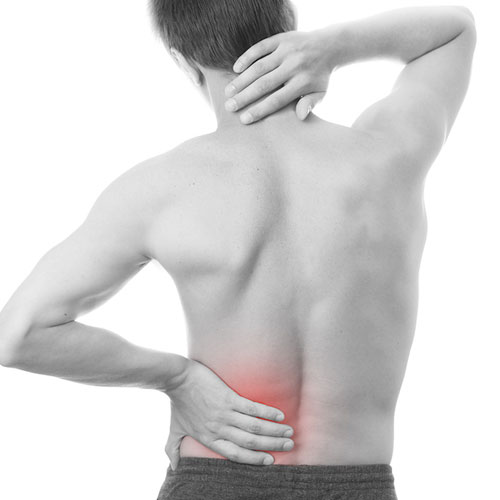
Neck & Lower Back Pain
The most common reason that we see clients is for neck and low back pain. There are several structures that elicit pain in these areas. We work on the muscles, tendons, nerves, bones and ligaments. A tight muscle will choke off the nerve that makes it function. We identify the knots or trigger points in the muscles and release them, allowing the nerve to return to normal function. Tendons connect muscle to bone. Through the tendon, a malfunctioning muscle will pull the spine out of alignment. We treat the misalignment with a chiropractic adjustment. Ligaments attach bone to bone. Taught ligaments in the sacroiliac joint are often the cause of low back pain. Our professional stretching protocol relaxes the ligaments. We address all of these elements to get you better, faster.

Herniated/Bulging Disc
We see this condition most frequently in the neck or low back. Microtrauma or small events over time are what typically lead to this type of pain. The client will present with some degree of neck or back pain and secondarily they will have radicular or shooting pain. If one has a herniated disc in the neck the most common symptom is pain and or tingling in the fingers. With a low back herniation one will present with pain and or tingling in the leg below the knee. In the early stages of a herniation one might not yet have radicular symptoms. The cause here is the inner portion of the intervertebral disc, the nucleus pulposus, pushing on the exiting nerve root at the spinal level. This condition responds well to care but it’s important to come in as soon as the symptoms begin.

Headaches
Cervicogenic headaches, those that stem from neck dysfunction, tension headaches and migraine headaches all respond very well to chiropractic care. We spend much of the visit relaxing the musculature of the shoulders as well as the suboccipital muscles, where the head connects to the neck. If we are your first stop to getting relief from your headaches we will rule out dietary as well as other causes. If we determine that we can help you we will start with six treatments and measure outcomes closely. Often, we are the last stop after clients have had an MRI that is unremarkable and medication that is not working. We are happy to help you and in most cases we will decrease the intensity, frequency and duration of your headaches.
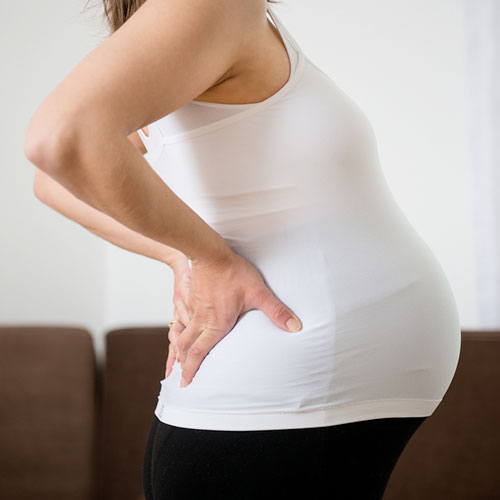
Sciatica
Clients with sciatica usually present with some degree of low back pain with more intense pain/numbness/tingling down the leg often to the knee. The cause of sciatica is compression of the sciatic nerve. The sciatic nerve runs through the piriformis muscle. Tight musculature can choke the nerve leading to a great deal of pain. We see this most often in pregnant clients and gentlemen who sit or stand for a prolonged period of time.

Whiplash
Whiplash is most often associated with auto accidents. This type of sprain/strain injury occurs when one comes to a fast stop after traveling at a high speed. Generally, the faster you are going the more severe the soft tissue (muscle, tendon, ligament) damage. Time is of the essence here. Those that seek treatment right away are able to overcome this injury quickly. In cases where people delay treatment we still are typically able to get you back to “pre-accident” condition but it will take longer.
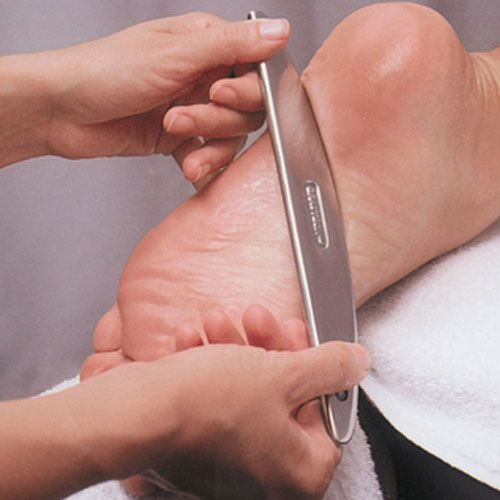
Plantar Fasciitis
The suffix -itis means inflammation. This condition is inflammation of the plantar fascia, which is the bottom of the foot. We see this most commonly in runners, but you don’t have to be a runner to suffer with this problem. The client will present with pain on the bottom of the foot and heel. The pain is often worse in the morning or after prolonged standing and walking.

Lateral/Medial Epicondylitis
Tennis Elbow and Golfer’s Elbow respectively. The suffix – it means inflammation. You don’t have to play tennis or golf to get this condition. We see it frequently in weight lifters that are pushing heavy weight doing bicep curls. The tendinous attachment point of the extensor and flexor muscles at the elbow become inflamed with repeated use. We treat this with deep tissue muscle work utilizing the Graston instruments. Ultrasound therapy is also helpful in treating lateral and medial epicondylitis.
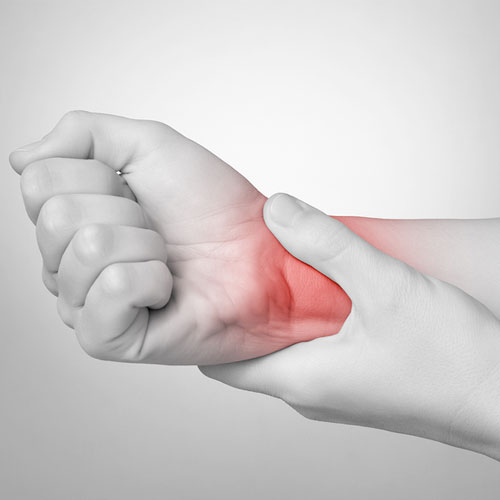
Carpal Tunnel Syndrome
The client presents with numbness, tingling or pain at the wrist and into the fingers. CTS is often exacerbated by prolonged computer use. CTS responds very well to care and we have help many people overcome it without surgery. We start by working at the neck to make sure that there is no pressure at the nerve root exiting the spine. We then follow the pathway of the nerve down the shoulder and into the involved arm and finally the hand. We have helped clients that have already had carpal tunnel surgery who are still having hand issues. In those cases we find that there is nerve impingement in the neck. When we address the nerve interference in the neck and shoulder their symptoms resolve.

Frozen Shoulder
The medical term for this condition is Adhesive Capsulitis. The suffix -itis means inflammation. In this case one has adhesions in the glenohumeral joint, where the arm fits into the shoulder, surrounded by the rotator cuff muscles. The client presents with limited range of motion on the affected side. The history reveals no trauma but slow progression with pain and limited range of motion with lifting the arm. The client may not be able to reach to the top of the steering wheel in their car or loop their belt all the way around their pants. We treat this condition with muscle work at the neck and shoulder as well as a stretching protocol. You will also do exercises at home to achieve a faster resolution.
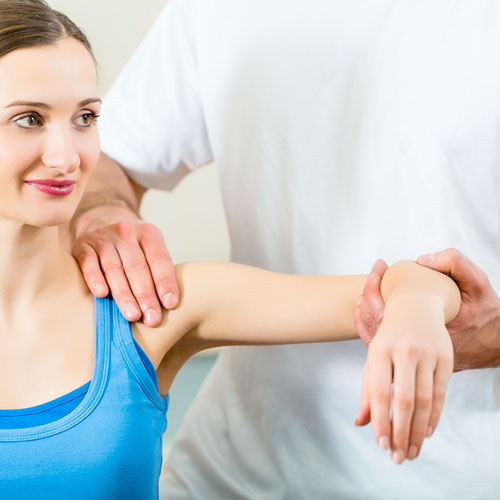
Thoracic Outlet Syndrome
This condition occurs when there is nerve compression between the clavicle and first rib. Additionally anterior and middle scalene muscle hypertonicity is often palpated in clients with TOS. The patient presents with sharp, burning or aching pain at the neck, shoulders, down the arms and often into the fingers. Our treatment involves deep tissue muscle work to the affected area as well as a stretching protocol to open up the shoulders and relieve the nerve compression.

Sports injuries/Muscle Pulls & Strains
Sports injuries respond very quickly to our treatment protocols. We have a three part process including deep tissue muscle work, professional stretching to the area of complaint and finally a chiropractic adjustment. Many sports injuries left untreated will eventually resolve on their own. Why not just rest it and let the body heal itself? If you don’t seek treatment you are more likely to injure the same area again because scar tissue will lay down leading to aberrant motion and therefore weakness/instability in the area. Athletes come to us because we get them better, faster.

Rotator Cuff Syndrome
The shoulder joint is the most unstable joint in the body and therefore often a cause of problems. Athletes, especially baseball and tennis players are often plagued with shoulder pain and dysfunction. The muscles of the rotator cuff, the supraspinatus, infraspinatus, teres minor and subscapularis each have their role to play in shoulder stability and function. We isolate the muscles that are causing the problem and get our clients back to peak performance.

Sacroiliac Joint Dysfunction
The sacroiliac joint is where the sacrum and hip meet. Commonly abbreviated the SI, it’s often the culprit when clients come in complaining of low back pain. As a rule we always address the SI joint when clients come in with low back pain. SIJD is exacerbated by prolonged sitting. During the first visit history clients often say that they can get comfortable while seated but as soon as they get up they feel pain and have difficulty standing up straight.

Facet Syndrome
The hallmark presentation of a client with facet syndrome is antalgic posture. This condition occurs when the small posterior joints of the spine become fixated. The client is antalgic, or leaning over, unable to balance their weight evenly while walking. Leaning away from the side of the fixation somewhat relieves their symptoms. This is often the diagnosis when someone’s “back goes out,” one of the most acute and painful conditions that we treat. Facet syndrome does not respond well to muscle relaxers and anti-inflammatories. Left untreated it can persist, waxing and waning for months. The good news is that once we begin treatment facet syndrome typically resolves in five visits.






